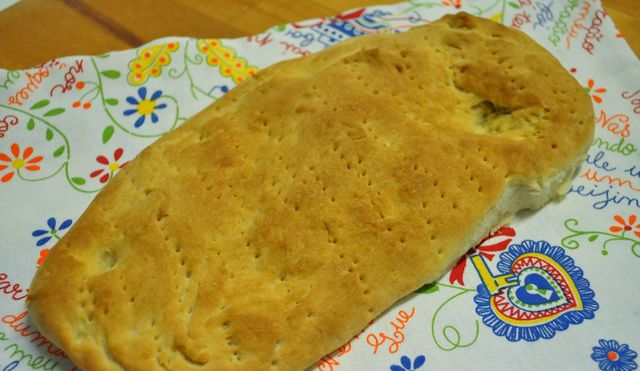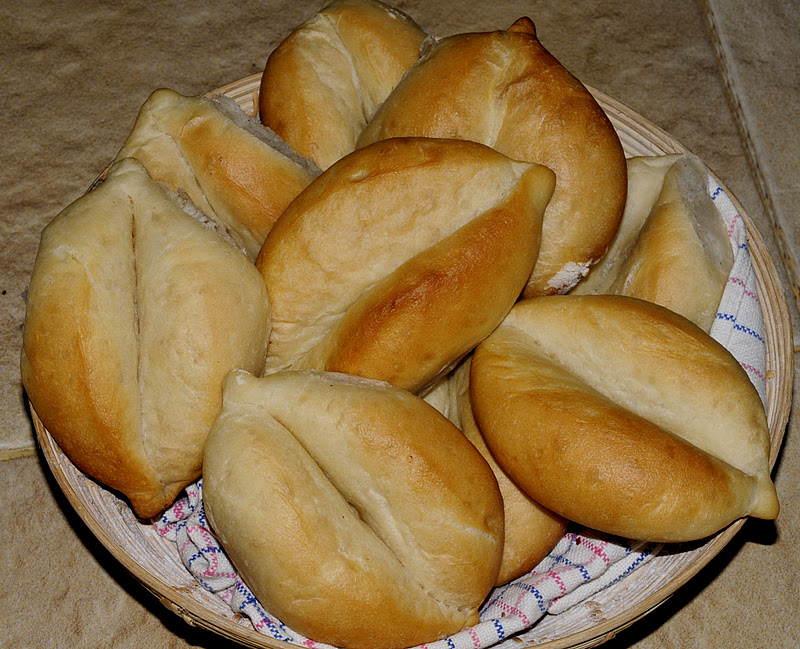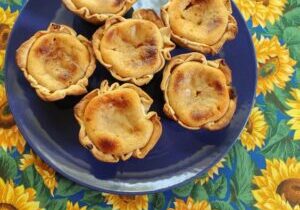10 Portuguese breads you’ll love when you visit Portugal
Portuguese breads are ubiquitous on tables from the north to the south of the country, and even on the islands. The type of bread varies from region to region. Rye-based breads are more common in the northern half of Portugal, and wheat-based breads in the southern half.
Bread is the most widely consumed foodstuff in Portugal. At breakfast, lunch, afternoon tea and dinner, the Portuguese never go a meal without a slice of bread. There are many varieties to choose from. As you can imagine, I won’t be able to mention all the Portuguese breads that exist in this article, but I’m going to introduce you to 10 that you shouldn’t miss.
“Numa casa portuguesa fica bem. Pão e vinho sobre a mesa.” Amália Rodrigues – phrase from a song by the famous Portuguese fadista – (In a Portuguese house you feel good, there’s bread and wine on the table)

1- Pão Alentejano
Pão Alentejano is a wheat bread made in a wood-fired oven, with a hard, crisp crust and a compact crumb. It is commonly sliced thickly, and generously dipped in the region’s olive oil. It’s not all that surprising when you consider that the Alentejo is THE region of olive trees. You can easily find Pão Alentejano in Lisbon and Alentejo.
This Portuguese bread is also used to cook typical Alentejan dishes such as :
- the açorda : slices of bread placed at the bottom of the dish and drizzled with water boiled with garlic, salt and olive oil, to which coriander is added, and cod or shrimp. Açorda is served with a poached egg.
- the migas alentejanas: which use leftover hard bread moistened in water, olive oil or lard with garlic to form a porridge. In the Alentejo, this porridge is fried until it becomes thick and golden-brown.
2- Bolo Lêvedo
Even though it’s called “bolo” (cake) and not “pão” (bread), Bolo Lêvedo is indeed a Portuguese bread. It’s a little-known bread, and for good reason: it doesn’t come from the mainland, but is typical of the Azores archipelago, more specifically the Furnas region, a volcanic area on the island of São Miguel, the main island of the Açores.
This is one of Portugal’s soft, sweet breads, often served slightly warm with butter and garlic.
3- Bolo do Caco
It’s increasingly found on the mainland, but Bolo de Caco originated on the island of Madeira. It’s a Portuguese bread made from wheat flour and sweet potatoes, baked on a hot stone.
Like Bolo Lêvedo, Bolo do caco is traditionally served with garlic butter, and its slightly sweet taste is delicious.
4- Broa
Broa is a corn bread with a compact crumb and a very distinctive taste. It was voted 36 th best bread in the world in 2019 by CNN.
Along with bolo levêdo, this is my favorite Portuguese bread! Most often it has a yellowish color and a dark crust. But sometimes it includes rye as well as maize, in which case it’s less yellow and less sweet.
It is often served with sardines during the popular June festivals: Santo Antonio in Lisbon and São João in Porto.
One of the most famous variants is the broa d’Avintes (pictured below), originating in Vila Nova de Gaia near Porto. Broa de Avintes is a bread made from corn flour, rye and malt. It is dense like traditional broa, but dark brown and usually shaped like a bell tower.
This is one of Portugal’s most traditional breads, and is widely eaten in the north of the country. It is baked for five to six hours in the oven and generously dusted with flour. It is particularly appreciated with the famous Portuguese soup: caldo verde.
Every August since 1988, the town of Avintes has celebrated the “Festa da Broa”.

5- Pão de Mafra
This bread is only produced in the Lisbon region towns of Carvalhal, Barril and Encarnação, as all pão de Mafra sold in Portugal must be certified.
To be officially a pão de Mafra, it must follow certain specific instructions, namely: be produced in Mafra, be made with local ingredients, be baked in a traditional wood-fired oven and have a moisture content of over 80%.
Pão de Mafra comes in a variety of forms, mostly long or in a ball. It’s a Portuguese bread made from wheat and rye flour, much appreciated for its soft crumb and fine, hard crust.
It is said to be the descendant of Saloio bread, produced in the Lisbon suburbs (Saloia region) and dating back to the 19th century. In those days, when people traveled from the Saloia region to Lisbon for a day, the tough crust helped preserve the crumb.
At the time, pão de Mafra was considered the bread of the poor, the bread of country folk, since it was made with flour that still contained traces of bran, hence its dark color, unlike white bread, made with twice-sifted flour and consumed by the wealthier classes.

6- Bolo de azeite
In a country that produces some of the best olive oil in the world, you couldn’t do without a traditional olive oil bread. This bread is made from wheat flour and olive oil (as the name suggests).
Although it’s called a “cake” (bolo) in olive oil, it’s a bread and not a cake. It was given this name to differentiate it from the traditional bread eaten daily, as the bolo de azeite is much richer and reserved for special occasions.
Traditionally, bolo de azeite was eaten at Easter. Typical of inland Portugal, particularly in the Lamego, Guarda and Covilhã regions, it’s not an easy bread to find, but if you travel to these regions, you’ll find it easily.

7- Pão de alfarroba
You all know the Algarve for its oranges, but there’s another fruit that’s very present here: carob. Have you heard of it? Carob is a fruit found in Mediterranean climates and has many virtues: rich in calcium, iron, protein and fiber. Portugal is one of Europe’s biggest producers.
Pão de alfarroba, a traditional bread from Algarve uses carob flour (alfarroba in Portuguese) and wheat flour, giving it a sweet touch and a very dark color, so much so that it can be likened to a chocolate bread.
8- Bica de azeite
Bica de azeite is a little-known bread. It is easily recognizable as a flat bread. It is made with olive oil and has its origins in the Jewish “pita” bread.
Since 2005, this bread has been celebrated every September in the village of Monforte da Beira, in the municipality of Castelo Branco, where it is widely produced and consumed.
9- Papo seco, carcaça, molete, bijou
All these names for the same individual bread roll with a tear in the middle and two kinds of little nipples at the end. It’s a soft bread made from wheat flour, with a very light crust.
Despite all the different names, these breads are very similar, and what varies most is the name given to them in each region. In the north: Molete or Bijou, in the center: Papo seco and in Lisbon: Carcaça.
These are the most common Portuguese breads in Portugal. They are eaten for breakfast, or as a snack with ham or cheese.
Unlike many other countries, in Portugal individual loaves are less expensive per kg than large loaves. These Portuguese breads are the easiest to find, and can be found in any Portuguese bakery.
10- Regueifa
Regueifa is a very soft wheat bread. It’s easy to recognize because it’s shaped like a circle and interlaced. It is traditional in Minho and also found a lot in the seaside town of Aveiro. It’s not easy to find outside these areas.
The Portuguese used to buy Regueifa on Sundays. That’s why it was also called “Sunday bread”.
In conclusion
So, as you can see, there are plenty of Portuguese breads. And, as mentioned in the introduction, I’m only talking about 10 of them. There are many more varieties.
In particular, there are many breads with meat, such as the famous “pão de chouriço” with chouriço found at all Portuguese festivals, or the “folar” with meat found mainly in northern Portugal.
There are also many sweet breads (although they are more cakes) such as fogaça, a kind of sweet brioche originating from Santa Maria da Feira, the “pão de deus” with coconut (I love it) or the “pão de ló” which I talk about in my article on Portuguese desserts.
Join us on social networks!
- Facebook group “Lovers of Portugal”,
- Facebook page “Living in Portugal”
- Instagram “Living in Portugal”
Receive the latest blog articles and our selection of properties every month.
* required fieldFirst name * *Last name Telephone E-mail address * *Current city of residence Interest: *
- Buying a property in Portugal
- Renting a property in Portugal
- Nothing special in sight
Date of arrival in Portugal How can we help you? * * Contact me: *
- Quickly please
- Later please
Region of interest *
- Almada
- Aroeira
- Seixal
- Setubal
- Other
Here you can consult our Privacy Policy and Terms and Conditions.
Articles Populaires
dernières annonces

2 bedroom apartment with sea view, 10km from Lisbon and 2km from the beaches
Rua da Bica, 103Discover this magnificent 2 bedroom apartment with views of Arriba Fóssil and the sea, 2km…

Duplex apartment with sea view 15 minutes from Lisbon
rua Santa Teresa 7Bedroom + duplex apartment with sea view and 15 minutes from Lisbon.

Single-storey house with swimming pool
Just a few meters from the magnificent bay of São Martinho do Porto, lies this…

Condominium apartments facing the sea
São Martinho do PortoBeautiful apartments in São Martinho do Porto “Janela da Baía”! Located in the heart of…

Villa already finished and ready to move in: 4-suite bungalow on 750m2 plot in a quiet area of Azeitão
Rua de ParisHouse already finished and ready to move into! Close to shops and services, quick access…

Magnificent house with basement, indoor and outdoor pool in Verdizela/Aroeira
Verdizela/AroeiraNew turnkey project: magnificent single-storey villa, 498m2 in surface area, high-end finishes on a 1875m2…

Luxury apartment on the edge of a nature reserve
Your modern, spacious apartment between the beach and Lisbon’s capital. – Beach 5min – Golf…

House T3 1 10 min from Lisbon and 5 min from the beaches
PêraREADY TO MOVE IN! New T3 1 ready-to-live-in house in a quiet, rural neighborhood with…

4 bedroom villa with pool and jacuzzi in Aroeira
rua são miguelModern, minimalist architect-designed house with exceptional details in a quiet location in Aroeira 2-storey house…
Inscrivez-vous à notre newsletter
Recevez chaque mois les derniers articles de notre blog "la vie au Portugal" et notre sélection de biens immobiliers à vendre.





















